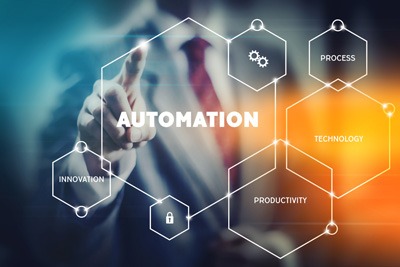Reverse Auctions Overview & When to Use
Reverse auctions as a tool have been around since the late 1990's. They have been used in the Fortune 2000 to obtain more favorable pricing, to reduce cycle times, and to lower overall supply costs. For organizations that are thinking about whether to implement and how to implement reverse auctions, this article is designed to provide some guidelines. It will explain the strengths of reverse auctions and will address some common criticisms that are often leveled at reverse auctions. It proposes a balanced view of reverse auctions that recommends their use as one of many sourcing tools available. It also describes situations when reverse auctions should be used and when they should not be used and provides some direction to sourcing personnel seeking to implement them as part of an overall sourcing program.

Reverse Auctions Critics
There are two common criticisms that are directed against reverse auctions. One is that they are not strategic and do not facilitate long term relationships with suppliers. The second criticism is that suppliers do not like them. To address the first criticism, reverse auctions should rarely be used in relationships with strategic suppliers or suppliers where there is a good degree of collaboration or integration of supply chains that takes place in a long-term relationship. Reverse auctions are best targeted toward relationships that are more transactional in nature and are highly focused on obtaining favorable pricing. They are designed for purchases that feature little collaboration, shorter term contracts, products with common specifications and little complexity, and purchases where there are savings opportunities. Strategic relationships with suppliers rarely meet these criteria.
The second criticism of reverse auctions is that suppliers do not like them. This criticism is not leveled directly at reverse auctions but it applies to any sourcing methodology that aims to lower the price that the organization pays for goods or services. When suppliers need to lower their prices, it reduces their profits. If you asked 100 suppliers if they liked reducing their profits, they would probably all say "No!" Reverse auctions are very effective at lowering prices when they are used well. To our knowledge, no supplier has ever been forced to participate in a reverse auction event. They all participate voluntarily because they are motivated to win the business. A rational supplier would not take the time to participate in an event if the supplier thought it wouldn't be worth it. Reverse auctions also provide other benefits for suppliers. They provide real time feedback on the competitiveness of a bid. The supplier does not need to wonder if the bid was too high or too low. Reverse auctions also shorten the time it takes for a supplier to win the business. For these reasons, the criticism that suppliers don't like reverse auctions does not hold a lot of weight.

Balanced View of Reverse Auctions
While some people recommend using reverse auctions for every purchase and others do not want reverse auctions to be used at all, we are proposing a more balanced view. Reverse auctions are not always the best tool or even a desirable one for some purchases. However, for other purchases they are extremely powerful and will produce the best results. The trick is to use reverse auctions in situations where their use would deliver more value than the use of other tools. For most companies, these situations occur quite frequently. For example, reverse auctions are ideally suited for purchases of raw materials, processed goods, travel, printing services, capital equipment, components, and many other items. Reverse auctions work best when price is a key point of negotiation for the buying organization.
It might make sense to use more than one strategic sourcing tool to conduct a purchase. Sometimes sourcing personnel will run an RFI to qualify suppliers and to make sure that each supplier's offering is comparable with others in terms of quality and specifications. Then later, the organization will run a reverse auction to arrive at the best possible pricing. Using other sourcing tools in combination with reverse auctions increases the scope of purchases for which reverse auctions can be used. This is because each sourcing tool will be used to check different things. RFI's would be used to asses quality and production standards while the reverse auction would be geared toward getting the best pricing available from the qualified vendors.

Reverse Auctions: Factors to Consider
There are several factors that go into the decision on whether to use reverse auctions. These factors include: the specifications of the products, the structure of the supply base, the market pricing structure, projected lead times, contract status, the costs of switching vendors, the distribution complexity, the savings opportunity, the size of the purchase, and the strategic nature of the supplier relationships. This next few sections will discuss these factors in additional detail and explain the situations where these factors make reverse auctions a good choice for a purchase.
Product Specifications
The specifications of a product are an important factor in determining whether this product is an appropriate purchase for reverse auctions. Reverse auctions are generally more conducive to a purchase where the specifications are simple and there are not a lot of differences between supplier offerings. This is true if the items being purchased are commodities or if the specifications for the items are defined by a well accepted industry standard. In these cases, the nature of the items and supplier offerings makes them more conducive to a price based negotiation like reverse auctions. Highly engineered, branded, or unique items with complex specifications generally lend themselves to a different purchasing process (like an RFP). You also need to make sure that supplier products are really and truly similar so that you will not be disappointed in the quality, features, or other factors when a particular supplier wins. This will allow the buying organization to take into account other factors in supplier offerings and to make comparisons to determine the best value.
Structure of Supply Base
One of the most important elements needed in a purchase for conducting a reverse auction is a large an competitive supply base. As a general rule, if you do not have at least 3 strong, qualified, and competitive suppliers that will participate, you should not conduct a reverse auction to make the purchase. Without enough competitive suppliers, the force of competitive bidding may not be sufficient to drive pricing lower and produce the desired result for the buyers. It is also helpful if the suppliers have excess capacity since they will be more incentivized to bid lower in order to fill their capacity. To use reverse auctions, you would also want to see suppliers that are somewhat equal in pricing power and ability to lower the price.
Pricing Structure
This is not as important as some of the other factors, but it should still not be overlooked. Reverse auctions work well as a means of price discovery. However, you should not use reverse auctions when there is limited supply or at a time when the price is fluctuating rapidly. In these cases, suppliers may be hesitant to lower the price since they may think they could sell the product for more tomorrow. You generally want to use reverse auctions when the pricing trends are somewhat stable and suppliers can actually make forecasts and pricing projections for the value of inventory that they hold or plan to produce.
Lead Times
The lead time required for the product or service is important for determining whether the item is an appropriate purchase for reverse auctions. If the lead time is very short, the organization will probably not have the chance to organize and conduct a reverse auction. If a product or service is needed yesterday, a spot purchase or another type of purchasing tool would be better. Reverse auctions are suitable if there is a lead time long enough to conduct the purchase within the allotted time frame.

Contract Status
Another important consideration for reverse auctions is the contract status. Companies generally do not want to run a reverse auction involving a strategic, long term supplier. These relationships often involve long term contracts that entail a good deal of collaboration. All other things equal, reverse auctions are generally used for contracts that will be shorter term in duration. Reverse auctions are also useful for contracts that may be expiring in the near future since this is the time to review purchasing options.
Cost of Switching
The cost of switching vendors is also a very important consideration. Reverse auctions would generally be used only if there is little or no cost associated with switching to another qualified supplier. For example, if a company has significant vertical integration with the supplier or has complex tooling or production practices already in place that involve the current supplier's part or product, the costs associated with redoing these processes should be included in switching considerations. Reverse auctions are probably not the best vehicle to choose if there are large switching costs since any cost savings from the reverse auction would need to be greater than the costs of switching from an incumbent supplier.
Delivery or Distribution
The type of delivery schedules or distribution requirements associated with the purchase should also play a role in the decision to use reverse auctions. For purchases with an irregular and complex delivery requirements or where logistics is a substantial portion of the purchase, reverse auctions may not be the best option or should be used in conjunction with other purchasing tools. The reverse auction process is more conducive to purchases that have simple distribution requirements as well as a predictable and easy to understand delivery schedule.
Savings Opportunity
In order to use reverse auctions, there should be an opportunity for actual savings over other purchasing methods and tools. This sounds obvious, but it can sometimes be overlooked. The possible level of savings will be dictated by many factors that range from the effectiveness of current sourcing efforts to the amount of pricing flexibility that suppliers have. The savings opportunity needs to greater than the cost in time and resources needed to organize and run the reverse auction event.
Strategic Importance
Another important consideration for reverse auctions is the level of the relationship with the prospective supplier. If contract with the supplier will be for a highly strategic and important relationship, reverse auctions may not be the best option. For highly collaborative, long-term relationships it often makes more sense to use another tool. This is because the level of risk with these types of relationships is too high and the supplier will be designated as "strategic." A strategic supplier is one where there will be a high degree of collaboration over the long term. An organization should rarely run a reverse auction with a strategic supplier unless it is between several other "strategic." suppliers. Reverse auctions are more appropriate where the relationship with the supplier is more transaction rather than collaborative.
Market Structure
The structure of the market is also very important. You would also probably not want to run a reverse auction if the market was composed of a few tightly-knit suppliers. This is because these suppliers might be more likely to collude and communicate among themselves to keep the prices high in the event of a reverse auction. A reverse auction also may not be effective if the organization that is purchasing the products is the largest purchaser of the item on the market or if there is only one or two major suppliers. In these situations, the power of competitive bidding, and consequently the use of reverse auctions is greatly diminished.
Purchasing Process
Reverse auctions are best used as part of a centralized purchasing process. In this way requirements from different parts of the company are aggregated in an attempt to maximize a company's purchasing power. While reverse auctions can be used in a decentralized approach, they are more commonly used in a centralized one. A centralized approach often realizes the maximum benefit from reverse auctions since purchases from many areas are grouped together.

Size of Purchase
The size and dollar value of the purchase is also an important determinant of whether or not to use reverse auctions. Reverse auctions are often suited for higher dollar purchases because they do take time to set up and organize. For smaller purchases, it may be easier and more cost effective to negotiate directly with the suppliers or to use another tool. If the purchasing organization has a reverse auction process in place that is set up to run periodic reverse auctions already for these suppliers, then reverse auctions could be used for lower dollar purchases.
Conclusion
Based on the criteria listed above, many companies could use reverse auctions quite effectively for large portions of their total purchases. It is important when a company reviews the current levels and categories of spend to do an analysis based on the factors listed above. This should provide an organization with a basis for making a decision whether or not it makes sense to use reverse auctions for that category or for part of that category of spend. By using reverse auctions at the right time, correctly, and in combination with other best practice sourcing tools companies can maximize the value and benefits that arise from their sourcing efforts.
